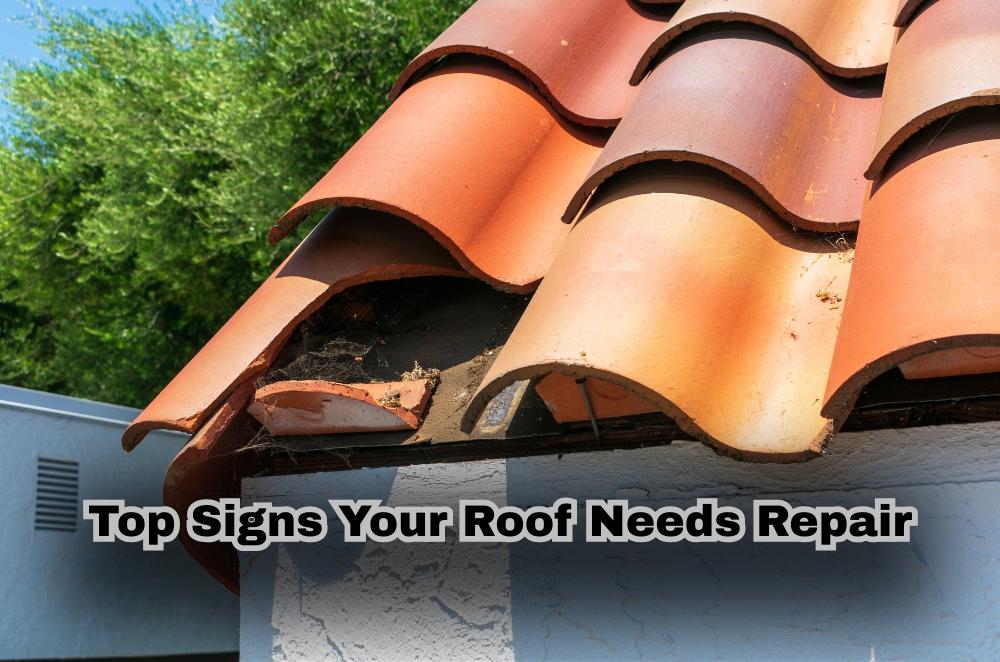Top Signs Your Roof Needs Repair

Most homeowners don’t think much about their roof until water starts dripping into the living room. I was the same. A few years ago, after a big Sydney storm, I noticed a dark patch on the ceiling and thought, “That’s odd.” It turns out that the flashing had failed, and rain had been seeping in for weeks. What started as a minor fix ended up costing thousands of dollars.
The truth is, roof problems often start small, and the earlier you catch them, the better. Regular roof repairs and maintenance can help you avoid major expenses, protect your home's structure, and even improve energy efficiency.
So, how do you know it’s time to act? Let’s break down the warning signs your roof might be sending.
1. What you can see from the ground
Sometimes all it takes is a walk around the yard and a glance upward.
-
Broken or missing tiles: These leave your home vulnerable to leaks, especially after heavy rain
-
Sagging rooflines: Can point to compromised internal supports or moisture-damaged timbers
-
Moss, algae, or mould buildup: Suggests excess moisture is being trapped
-
Rusting metalwork or gutters: A sign that water isn’t draining properly, common near the coast
Even small visual clues might indicate deeper issues hiding beneath the surface, so it’s worth checking after wild weather or strong winds.
2. Water damage or leaks: The hidden cost
Let’s say your ceiling has a stain or you notice paint bubbling along the cornices. These could be signs of a roof leak, even if you haven’t seen drips. Often, the issue isn’t with the roof tiles themselves, but with the roof plumbing, cracked flashing, blocked gutters, or failed downpipe, which can all redirect water into your ceiling cavity. In more serious cases, water damage can lead to:
-
Mould and mildew growth
-
Electrical hazards (if water reaches wiring)
-
Damaged insulation or sagging ceiling panels
If the leak stems from storm damage or a natural disaster, you may be eligible for emergency assistance. You can find more information on what qualifies as a roof emergency repair.
3. Your roof might be older than you realise
Tiled and metal roofs can hold up well for decades, but time, weather, and wear all take their toll. If your place was built more than 25 years ago and you’ve never had a proper roof inspection, it’s probably overdue.
Older roofs are more prone to:
-
Crumbling flashing
-
Loose or cracking ridge caps
-
Perished sealants and fixings
-
UV damage that weakens tile or metal finishes
A roof that looks fine from the street may have issues brewing underneath. One mate of mine was selling up and nearly lost the buyer after an inspection found rot beneath the sarking. All fixable, but costly.
4. Clues from inside the house
Not every roofing issue announces itself from above. Often, you’ll see the symptoms indoors first.
Keep an eye out for:
-
Sudden draughts or cold patches
-
Rising electricity bills due to poor insulation
-
Discolouration on the walls or ceiling plaster
-
Damp smells or musty odours in roof spaces
These can all point to compromised roofing or ventilation. Don’t wait until it turns into full-on water damage — especially if you live in a region with frequent rain.
5. Cracking or failing ridge capping
The ridge capping sits right at the roof’s peak, sealing the joins between tile rows. Over time, the mortar used to secure it can erode or crack, particularly after weather extremes.
6. Planning a renovation or prepping for sale?
If you’re doing a big makeover or listing your home, don't overlook the roof. Buyers (and building inspectors) will be quick to flag signs of wear, even if it’s only cosmetic. A tired or patchy roof can knock thousands off your property’s perceived value.
As outlined in this breakdown of roof renovations, investing in your roof now can deliver better energy performance, fresher aesthetics, and a more substantial return at sale time.
What to do when the warning signs show up
If anything here sounds familiar, don’t panic — but don’t sit on it either. Roofing issues rarely fix themselves, and delay often leads to more damage.
Here’s a smart way to begin:
-
Do a basic check from ground level (use binoculars if needed)
-
Document any cracks, leaks, rust, or visible shifts.
-
Call a licensed roof contractor for a proper assessment.
Unless you’re experienced, steer clear of climbing up yourself — roofing jobs require specialist safety knowledge and fall protection.
Prevention beats panic: why maintenance matters
If I could give just one tip, it’s this: deal with roof problems early. I’ve seen people ignore little issues for too long, only to end up replacing entire sections. Compare that to a minor patch-up or repointing job, and the difference is night and day.
Routine roof repairs and maintenance can:
-
Extend your roof’s useful life
-
Prevent expensive internal damage.
-
Help your home stay cooler in summer and warmer in winter.
-
Boost property value and appearance.
Final thoughts: keep your roof in check
You wouldn’t drive a car for 20 years without a service — your roof deserves the same attention. Whether you’re seeing clear warning signs like leaks or sagging, or you simply haven’t thought about it in years, don’t put off getting it checked. A small issue today could balloon into major structural damage down the line. Taking action early isn’t just about preventing disaster; it’s also an opportunity to upgrade your home with modern materials, better insulation, and improved street appeal. Start with a simple inspection and go from there. Your future self (and your wallet) will thank you. As explained, modern roof restoration can transform an ageing roof, improving insulation, aesthetics, and even its resale value.







